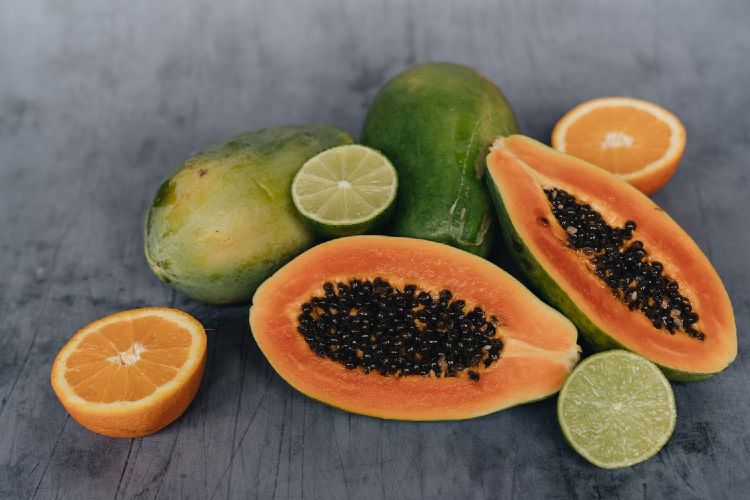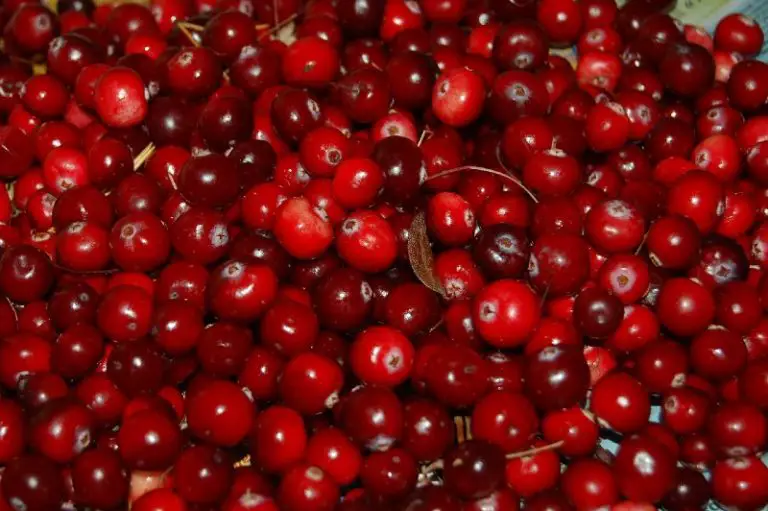What Does Horseradish Taste Like?
Quick Answer
Horseradish has a strong, pungent, and spicy flavor that becomes pronounced when the root is grated or cut. Unlike the lingering heat from chili peppers, horseradish’s heat is quick and primarily affects the nasal passages. Its taste is often described as “zingy” or “biting,” and it’s commonly used as a condiment in sauces or to add a kick to various dishes.
What is Horseradish?
Horseradish is a root vegetable used primarily as a spice or condiment. It is part of the Brassicaceae family, which also includes mustard, wasabi, broccoli, and cabbage. The plant has large, green leaves and a long, white root, which is the part that is typically grated or ground to produce a sharp, pungent paste. When freshly grated or cut, the root releases enzymes that create its characteristic spicy, peppery flavor.
What Does Horseradish Taste Like?
Horseradish has a strong, pungent, and spicy flavor that can be quite intense. When fresh and unprepared, horseradish root itself has little aroma. However, when the root is cut or grated, enzymes within the plant break down its complex compounds, releasing a sharp, peppery, and somewhat hot taste, similar to that of wasabi or strong mustard.
The “heat” of horseradish is not like that of chili peppers, which lingers; instead, its heat tends to dissipate quickly and mostly affects the nasal passages.
The taste of horseradish is commonly described as “zingy” or “biting,” and it can bring a burst of flavor to a variety of dishes. It’s often used as a condiment in sauces, typically mixed with mayonnaise or sour cream to make horseradish sauce, which is often served with roast beef. It is also used in cocktail sauce, often served with seafood, or even used to spice up Bloody Mary cocktails.
What Is The Texture of Horseradish?
The texture of horseradish can vary depending on how it’s prepared. In its raw, whole-root form, horseradish is firm and fibrous, somewhat similar to a parsnip or carrot. When freshly grated, it becomes a coarse, moist pulp that is often used immediately to preserve its potent flavor and aroma. Commercially prepared horseradish is usually ground finer and often comes in a jar, mixed with vinegar to help preserve its pungency; this form is a bit smoother but still has a slightly gritty texture.
When mixed with other ingredients like sour cream or mayonnaise to make sauces or spreads, the texture becomes much creamier, although you might still encounter small, gritty bits if the horseradish is coarsely ground. In all its forms, horseradish provides not just flavor but also a textural element to dishes, ranging from a crunchy, fibrous root to a smooth, creamy sauce.
FAQs
Is Horseradish Similar To Wasabi?
Both horseradish and wasabi belong to the same plant family and contain similar pungent compounds. However, wasabi is generally milder and has a more herbal undertone.
Why Does Horseradish Taste Hot?
The heat in horseradish is due to a compound called allyl isothiocyanate, which is produced when the root is cut or grated, activating enzymes that break down its natural glucosinolates.
Does Cooking Horseradish Reduce Its Pungency?
Yes, cooking horseradish will generally reduce its pungency as heat deactivates the enzymes responsible for its spicy flavor.
How Can I Reduce The Heat Of Horseradish In A Dish?
Mixing horseradish with dairy products like sour cream or mayonnaise can mellow its heat. Additionally, exposing it to air or heat for extended periods can also lessen its potency.
Is The Taste Of Fresh Horseradish Different From Jarred Horseradish?
Freshly grated horseradish usually has a more potent and cleaner flavor compared to jarred versions, which may contain vinegar or other preservatives that can alter its taste.
Can I Substitute Horseradish With Other Spices?
While it has a unique flavor, horseradish can sometimes be substituted with wasabi or hot mustard in recipes, although the resulting taste will differ.
How Should I Store Horseradish To Preserve Its Flavor?
Whole horseradish root should be stored in a cool, dark place or the refrigerator. Once cut or grated, it should be used immediately or mixed with vinegar and stored in a sealed container in the fridge.
What Types Of Cuisine Commonly Use Horseradish?
Horseradish is commonly used in European and American cuisines, especially as a condiment for meats like roast beef, or in sauces and dressings.
What Does Horseradish Smell Like?
Freshly grated horseradish has a strong, pungent aroma. The smell can be described as earthy, spicy, and slightly acrid, which can be quite noticeable when the root is cut or grated. The aroma is largely due to volatile compounds like allyl isothiocyanate that are released when the root’s cells are broken.
What Does Horseradish Sauce Taste Like?
Horseradish sauce is generally a mixture of grated horseradish root, vinegar, and other ingredients like mayonnaise or sour cream. The sauce has a creamy texture with a spicy, pungent kick. It can be tangy if vinegar or lemon juice is added. The dairy components often mellow out the intense heat of raw horseradish, making the sauce more palatable to a wider audience.
What Is The Difference Between Horseradish and Daikon Radish?
Horseradish and daikon radish both belong to the Brassicaceae family but are different in taste and texture. Horseradish is pungent, spicy, and used primarily as a condiment. Daikon radish has a milder, sweeter taste and a more watery texture. It is commonly used in Asian cuisines as a vegetable in salads, pickles, and cooked dishes.
Why Does Horseradish Taste Like Chemicals?
The chemical-like taste some people detect in horseradish is due to allyl isothiocyanate, a volatile compound formed when the root is cut or grated. This compound contributes to the root’s pungent, spicy flavor. While some might describe it as “chemical-like,” it’s a natural byproduct of the plant’s defense mechanism.
What Does Horseradish Taste Best With?
Horseradish pairs well with rich, fatty meats like roast beef and grilled steak, as its pungency can cut through the richness. It’s also commonly used in seafood sauces, mixed into salad dressings, or used to spice up soups and stews. Its sharp flavor can balance out creamy or cheesy dishes as well.
Does Horseradish Taste Like Wasabi?
Horseradish and wasabi have similar pungent and spicy profiles due to similar active compounds. However, they are not identical in flavor. Wasabi has a more herbal and complex taste, while horseradish is more straightforwardly spicy and pungent. Many commercial wasabi products actually contain horseradish as a main ingredient due to the high cost of real wasabi.
Is Horseradish Bitter or Spicy?
Horseradish is primarily spicy and pungent rather than bitter. Its heat is quick and intense, affecting mainly the nasal passages. While some people might detect a slight bitterness, especially in larger quantities or if it’s old, the dominant flavor profile is spicy.
Can You Eat Horseradish Raw?
Yes, you can eat horseradish raw, and it’s often consumed this way to take full advantage of its pungent, spicy flavor. When raw, it can be grated or finely chopped and used as a condiment or added to sauces and dressings. However, its potency means that it’s usually used sparingly.



